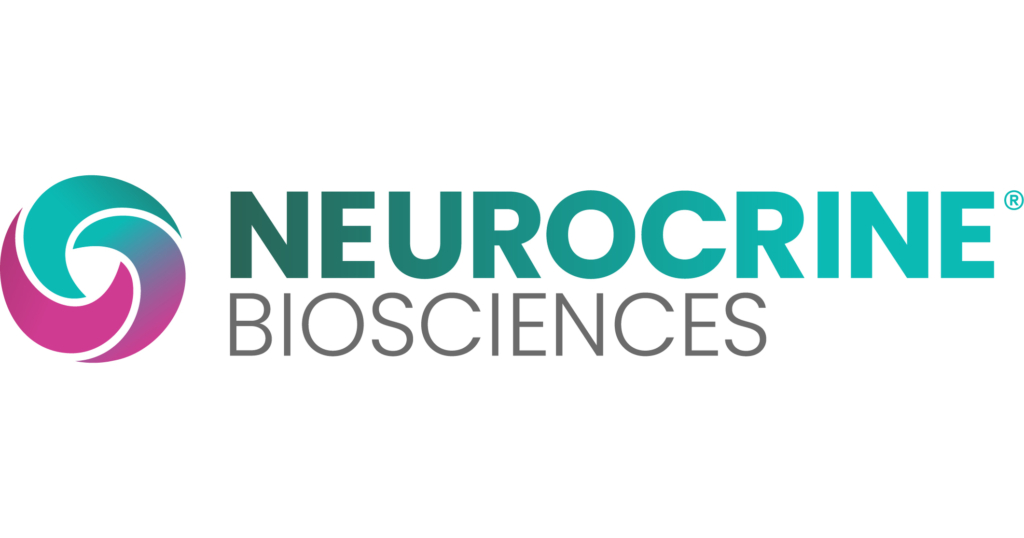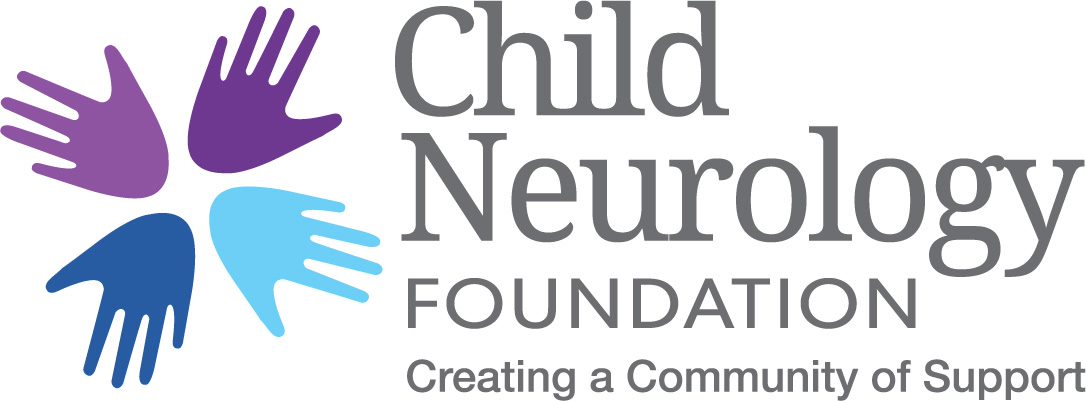
Authors: Spoorthi Jagadish, MD, MBBS; Sreenath Thati Ganganna, MD, MBBS
University of Iowa, Stead Family Children’s Hospital, Iowa City, IA
Reviewed: August 2021
SUMMARY
Dravet syndrome is a severe and rare form of epilepsy. It typically starts in the first year of life. It manifests with seizures that are:
- Associated with fever
- Frequent
- Often prolonged
- Medication-resistant
Dravet syndrome is also associated with mild, moderate, or severe developmental delay.
Dravet syndrome was first described by Charlotte Dravet in 1978. She called it a severe myoclonic epilepsy of infancy. In 2001, a genetic basis for this disease was discovered. Most cases are due to mutation in the SCN1A gene. This gene provides instructions for making sodium channels. These channels transport sodium ions into nerve cells in the brain. They play a key role in nervous system function.
The disease is lifelong. It affects 1 in every 15,700 to 40,000 live births. Males and females seem to be affected equally.
JUMP TO
Disorder Overview
DESCRIPTION
Dravet syndrome is a severe genetic epilepsy syndrome. It appears in infancy. Seizures caused by this disease are difficult to treat. Antiseizure medications often do not work.
Children with Dravet syndrome have normal development initially. However, due to the sodium channel abnormality and how it affects the brain, as well as the difficulty in controlling seizures, most children will experience developmental delay or regression. Even if the seizures are fairly well controlled, children with Dravet syndrome still have a steady neuro-cognitive decline.
Range of Severity
SCN1A gene mutations result in a spectrum of epilepsy conditions. Dravet syndrome is the most severe version. Some types of SCN1A gene mutations cause more severe symptoms than others. Some cause seizures at an earlier age than others. Not every individual with an SCN1A gene mutation will have Dravet syndrome.
The mildest form of mutation causes a condition called genetic epilepsy with febrile seizures plus (GEFS+). Febrile seizures are seizures triggered by a fever. In GEFS+:
- Febrile seizures persist at ages beyond what is usual
- Unprovoked, afebrile seizures develop alongside febrile ones
Risk of Death
Patients with Dravet syndrome have an increased risk of death. 15 to 20 out of 100 patients with Dravet syndrome may die by adulthood. The two most common causes of death are:
- SUDEP, or “sudden unexpected death in epilepsy “
- Status epilepticus, or prolonged, uncontrolled seizures
SUDEP in Dravet syndrome occurs mainly in childhood but can occur at any age in all patients with intractable or “difficult to control” seizures.
Death can also be caused by:
- Accidental injuries
- Drowning due to the seizure
- Aspiration of secretions or vomitus due to seizures
SIGNS AND SYMPTOMS
First Year of Life
Typically, seizures begin in the first year of life, between 5 and 8 months of age. The infant is usually otherwise healthy and with normal development. Seizures in the first year of life are usually:
- Prolonged (longer than 5 minutes)
- Convulsive
- Affecting one or both sides of body
- Triggered by something, such as fever, illness, hot weather, or even bright lights
After the First Year
Other types of seizures begin to appear between ages 1 and 4. These seizures may be due to fever or illness or may not have any obvious triggers. The seizures without obvious triggers are called unprovoked seizures.
The seizures at this age occur frequently and are challenging to treat. They may also last a long time, over 5 minutes. As seizures continue, children between the ages 2 to 5 years may begin experiencing:
- Developmental delays
- Learning difficulty
- Language impairment
- Behavioral problems, such as aggression
- Autistic features
- Attention-deficit hyperactivity disorder (ADHD)
- Movement and balance issues
- Tremors
- Crouched gait (walking with knees and hips bent)
- Low body tone
- Poor coordination
- Problems with the autonomic nervous system (difficulty regulating body temperature, heart rate and blood pressure)
- Sleep disturbances
Seizure Types
Children with Dravet syndrome may have different seizure types at different times.
Types include:
Myoclonic seizures
Atonic seizures or drop attacks
Seizures tend to become less frequent and less severe in adolescence and adulthood. Typically, older patients with Dravet syndrome may have less frequent and briefer seizures. They will also have intellectual disabilities, difficulty walking due to a stooped, wide based gait, and poor balance.
CAUSES
About 80% patients with Dravet syndrome have a mutation in their SCN1A gene. This gene provides instructions for making part of a sodium channel found mainly in the brain cells. The channel is involved in transmitting signals from one nerve cell to another.
SCN1A gene mutation is the most common cause for Dravet syndrome. Some other genetic mutations have also been known to cause Dravet syndrome, including CHD2, GABRA1, GABARG2, STXBP1, SCN1B, SCN2A and PCDH19.
About 90% to 95% of patients with Dravet syndrome have de novo genetic mutations. De novo mutations are spontaneous. They occur in the egg, sperm, or fertilized egg. In a few cases, both a patient and their family members will have an SCN1A gene mutation. However, family members with this mutation tend to have no or only mild symptoms.
Sometimes, no known genetic mutation is found. In these cases, Dravet syndrome can still be diagnosed via its symptoms.
LABORATORY INVESTIGATIONS
Brain MRI
EEG
An EEG, or electroencephalogram, records electrical activity of the brain. It is routinely used in patients with epilepsy. In Dravet syndrome, an EEG is usually normal during the first year of life. Over time, the EEG will show abnormal changes, such as intermittent electrical bursts, frequently called epileptogenic discharges. An EEG may be repeated over time.
This way, it can:
- Check responses to treatment
- Learn more about the types of seizure happening
- Learn how many seizures are happening
Blood Testing
Most patients with Dravet syndrome have a blood test to look for genetic mutations. An SCN1A gene mutation can help confirm a diagnosis of Dravet syndrome. However, this alone is not sufficient for diagnosis. A person can have this disease without an SCN1A mutation. Further, not all SCN1A mutations lead to the disease.
Therefore, experts only recommend testing an infant with two or more seizures that:
- Are prolonged
- Are generalized tonic-clonic or hemiclonic
- Occur with or without fever
- Occur within the first year of life
TREATMENT AND THERAPIES
Adults experience fewer seizures than children in Dravet syndrome. However, lifelong treatment is still required.
Immediate Treatment for Seizures
Antiseizure medicines can be used to stop seizures that last longer than 5 minutes. Antiseizure medicines that immediately abort seizures belong to a group of drugs called benzodiazepines.
They may include:
- Lorazepam
- Diazepam
- Midazolam
These can be administered in the nose, cheek, or rectum at home. They can also be injected in muscles or veins in a hospital setting.
Long-Term Treatment for Seizures
Long-term treatment options include antiseizure medicines and a ketogenic diet.
Antiseizure Medicines
These medicines are used to prevent seizures from occurring.
They include:
Stiripentol, topiramate, and levetiracetam
Cannabidiol
Fenfluramine
Note: Some antiseizure medications need to be avoided in Dravet syndrome. They can worsen seizures. These medications include phenytoin, lamotrigine, carbamazepine, and oxcarbazepine.
Each antiseizure medication is associated with certain side effects. Side effects can range from mild to severe. A child’s neurologist can discuss specific side effects. However, examples include:
- Harm to the liver or pancreas, which can be checked with regular blood tests.
- Changes in blood cell counts
- Changes in blood chemistries, like sodium level
Antiseizure medications may interact with each other in the blood stream. This can cause changes to how effective they are. Drug levels may need to be checked from time to time. This is especially true if response to treatment is poor.
Ketogenic Diet
Special diets can help control seizures:
- Ketogenic diet, in younger children
- Modified Atkin’s diet, in older children
These diets are high-fat and low-carbohydrate. They have been proven effective in controlling seizures in children with Dravet syndrome in many studies. Strict adherence to the diet is necessary to get good results. These diets should be undertaken only in association with an epilepsy center or physician familiar with the diet.
The ketogenic diet requires carefully monitoring a child’s growth. Some important side effects of the ketogenic diet include:
- Nausea
- Vomiting
- Constipation
- Low blood glucose
- Electrolyte imbalance
- Kidney stones
- Elevated levels of cholesterol or other types of fat in the blood
Surgical Options for Seizures
Surgical options can help in the long- or short-term. They include vagus nerve stimulation (VNS) and deep brain stimulation (DBS). Deep brain stimulation is not yet FDA approved in children. DBS is only approved for focal seizures in adults over 18 years of age. VNS and DBS therapy are invasive procedures. They require surgery. For more in-depth information please see the medical article, Is Epilepsy Surgery an Option in Dravet Syndrome?.
Vagus Nerve Stimulation
In VNS, a generator is implanted under the skin of the upper chest. Wires are attached to a nerve in the neck called the vagus nerve. Electrical stimulation is delivered via the vagus nerve to various regions of the brain. This can reduce seizure occurrence.
Further, a special magnet that can be swiped over the VNS generator during a seizure. This can stop a seizure. It might also reduce the intensity of a seizure.
The newer generation VNS devices are programmable. They can detect the sudden jump in heart rate associated with a seizure. They can then send extra electrical impulses to the vagus nerve. This tells the brain to stop the electrical activity causing the seizure.
Side effects of VNS mainly include:
- Voice changes
- Hoarseness
- Throat discomfort
- Cough
You can read more about Vagus Nerve Stimulation from The Brain Recovery Project.
Deep Brain Stimulation
DBS involves placing electrodes in specific regions of the brain. These regions are then stimulated with small, regular electrical impulses. This can help reduce the frequency and severity of the seizures.
Side effects sometimes associated with DBS include:
- Infection
- Headache
- Confusion
- Trouble with concentration
Untreated Seizures
If seizures are not treated, they can cause several problems.
Status Epilepticus
Lack of treatment can lead to status epilepticus.
Status epilepticus is when:
- A seizure lasts longer than 5 minutes, or
- More than one seizure occurs in a 5-minute period, without a return to normal consciousness in between
Status epilepticus is a medical emergency. It is associated with increased risk of death and brain damage.
SUDEP
In the adolescent and adult years, frequent but brief night-time seizures are more common. They place a patient at risk of SUDEP. SUDEP stands for “sudden unexpected death in epilepsy.” All patients with difficult to control seizures are at risk for SUDEP. It can occur at any age. In adolescent and adult patients, nocturnal seizures and medication noncompliance are associated with a higher risk of SUDEP
Development and Cognition
In early childhood, frequent seizures may negatively impact development. When treatment is started late, development and cognition can be affected.
Managing Other Symptoms
Ongoing seizures can cause secondary symptoms for patients. However, various treatments, such as antiseizure medications, the ketogenic diet, and/or VNS, can help control the seizures
Physical Therapy and Occupational Therapy
This is helpful for children struggling with:
- Gait
- Muscle tone
- Balance
- Coordination
Medications
Medications are sometimes needed to treat:
- Behavioral disturbance
- Inattention
- Hyperactivity
- Sleep disturbance
Individualized Education Plan (IEP)
Many children with Dravet syndrome have some form of learning difficulty. They may need extra help in school. Special plans like an individualized educational program (IEP) can help.
OUTLOOK
It is hard to completely control seizures in Dravet syndrome. However, treatment helps reduce the seizures. Treatment can also help decrease the occurrence of status epilepticus and SUDEP.
The life expectancy of patients with Dravet syndrome is not well defined. Most children will have moderate to severe developmental delay or regression. Preventing status epilepticus at a younger age is important. This can help reduce future seizures and developmental delays.
Care and Families
Most patients will have some degree of intellectual disability. It might be mild, moderate, or severe. Adolescents and adults often need some form of help with activities of daily living.
Families caring for those with Dravet syndrome may have anxiety. The anxiety is multifactorial and stems from a number of different stressors, including:
- Difficult to control seizures
- Developmental delays and educational challenges
- Medication side effects
- Behavioral issues, including aggression and autistic features
- Inability to obtain appropriate childcare
- Sleep disturbances
Any or all of the above can have a significant impact on a family’s financial needs. It can also have a negative impact on family members’ ability to work.
Changes Over Time
It is not possible to outgrow this disorder. It is a lifelong disorder. However, as a patient gets older:
- The number of seizures decreases
- The length of each seizure decreases
- Cognitive delay tends to stabilize
Ongoing Seizure Control
The following is important to obtain good seizure control:
- Taking prescribed antiseizure medications daily
- Avoiding warm baths or exercise on hot days
- Avoiding photosensitivity triggers
- Getting adequate sleep (lack of sleep is a known trigger for seizures)
- If using the ketogenic diet, following it strictly
- Getting exercise, but avoiding it on hot days
RELATED DISORDERS
Febrile Seizures
In early childhood, this syndrome may be hard to differentiate from febrile seizures. Febrile seizures can sometimes present with status epilepticus. However, in Dravet syndrome, there are:
- Recurrent episodes of status epilepticus with fever
- Often hemiclonic (one-sided) seizures
Migrating Partial Seizures of Infancy (MPSI)
MPSI is a rare, severe form of epilepsy affecting infants. Children with MPSI have:
- An earlier seizure onset than in Dravet syndrome, typically in early infancy
- Severe developmental delay already present when seizures appear
- EEG findings showing seizures arising from multiple sites on both sides of the brain
Lennox-Gastaut Syndrome (LGS)
LGS is a severe epilepsy syndrome of childhood. In this condition:
- Children do not have febrile clonic seizures in first year of life
- The main seizure types are different from Dravet syndrome. LGS seizures include:
- Drop attacks (slumping and falling) during daytime
- Generalized tonic seizures (stiffening of whole body) during sleep
- Atypical absences
- Patients have a specific EEG signature
Myoclonic Atonic Epilepsy
This is also known as Doose syndrome. It presents with a distinct seizure type called myoclonic-atonic seizures. These consist of a quick myoclonic jerk followed by a sudden loss of body tone resulting in a fall. As with Dravet syndrome, children will have febrile seizures in early infancy. However, focal seizures are not commonly seen in this form of epilepsy.
Resources
Dravet Syndrome Foundation
The mission of Dravet Syndrome Foundation (DSF) is to aggressively raise research funds for Dravet syndrome and related epilepsies; to increase awareness of these catastrophic conditions; and to provide support to affected individuals and families.
DSF hosts a private support group for parents on Facebook. If you would like to connect with other families, this is a great place to ask questions about living with Dravet syndrome. To join the group, please visit the Facebook page.


Child Neurology Foundation (CNF) solicits resources from the community to be included on this webpage through an application process. CNF reserves the right to remove entities at any time if information is deemed inappropriate or inconsistent with the mission, vision, and values of CNF.
Research
ClinicalTrials.gov for Dravet syndrome are clinical trials that are recruiting or will be recruiting. Updates are made daily, so you are encouraged to check back frequently.
ClinicalTrials.gov is a database of privately and publicly funded clinical studies conducted around the world. This is a resource provided by the U.S. National Library of Medicine (NLM), which is an institute within the National Institutes of Health (NIH). Listing a study does not mean it has been evaluated by the U.S. Federal Government. Please read the NLM disclaimer for details.
Before participating in a study, you are encouraged to talk to your health care provider and learn about the risks and potential benefits.
Family Stories
Meet Dravet Warriors and read about their journeys on the Dravet Stories page from the Dravet Syndrome Foundation.
Child Neurology Foundation (CNF) solicits resources from the community to be included on this webpage through an application process. CNF reserves the right to remove entities at any time if information is deemed inappropriate or inconsistent with the mission, vision, and values of CNF.
The information in the CNF Child Neurology Disorder Directory is not intended to provide diagnosis, treatment, or medical advice and should not be considered a substitute for advice from a healthcare professional. Content provided is for informational purposes only. CNF is not responsible for actions taken based on the information included on this webpage. Please consult with a physician or other healthcare professional regarding any medical or health related diagnosis or treatment options.
References
Dravet, C. (2011), The core Dravet syndrome phenotype. Epilepsia, 52: 3-9. https://doi.org/10.1111/j.1528-1167.2011.02994.x
Genton, P., Velizarova, R. and Dravet, C. (2011), Dravet syndrome: The long‐term outcome. Epilepsia, 52: 44-49. https://doi.org/10.1111/j.1528-1167.2011.03001.x
Marini, C., Scheffer, I.E., Nabbout, R., Suls, A., De Jonghe, P., Zara, F. and Guerrini, R. (2011), The genetics of Dravet syndrome. Epilepsia, 52: 24-29. https://doi.org/10.1111/j.1528-1167.2011.02997.x
Wirrell EC, Laux L, Donner E, Jette N, Knupp K, Meskis MA, Miller I, Sullivan J, Welborn M, Berg AT. Optimizing the diagnosis and management of Dravet syndrome: Recommendations from a North American consensus panel. Pediatr Neurol. 2017 Mar;68:18-34.e3. PMID: 28284397; http://doi.org/10.1016/j.pediatrneurol.2017.01.025
Brunklaus A. Ellis R. Reavey E. Forbes G.H. Zuberi S.M. Prognostic, clinical and demographic features in SCN1A mutation-positive Dravet syndrome. Brain. 2012; 135: 2329-2336. https://doi.org/10.1093/brain/aws151
Thank you to our 2023 Disorder Directory partners:








